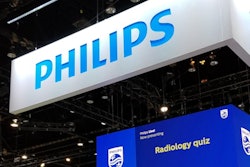To determine the factors that affect follow-up completion rate in these patients, presenter Dr. Barun Bagga from New York University and colleagues retrospectively analyzed patients with incidental lung nodules before and after implementation of structured Fleischner recommendations and electronic tracking.
Although univariate analysis showed that structured reporting was associated with higher rates of appropriate follow-up completion (75% vs. 56.6%, p < 0.001) and less frequent loss to follow-up (29.5% vs. 40%, p = 0.002), these differences were mostly accounted for by incidental lung nodules that are 8 mm or smaller in the outpatient setting, according to the researchers.
In other results, the researchers found that nonwhite races had significantly lower rates of completed follow-up (p = 0.009) than white patients. Additionally, the mean age of patients completing follow-up was 66 years, compared with 69 years for not completing appropriate follow-up (p = 0.015).
Multivariate analysis showed structured reporting was not independently associated with appropriately completed follow-up; age, race, care setting, nodule size, and Fleischner category retained their independent association, however.
The researchers found that a model including patients with age less than 68 years, nodule size greater than 8 mm, outpatient setting, race, and Fleischner recommendation of three-to-six-month follow-up, biopsy, or PET exam, yielded an area under the curve of 0.71 for appropriate follow-up.
Further interventions may be needed to improve care, according to the researchers.
However, "widespread use of standardized reporting would decrease selection bias for larger [incidental lung nodules] and establish clearer benchmarks for rates of appropriate follow-up in larger nodules," the authors wrote.
View this prerecorded session to follow up on any questions you might have.



















